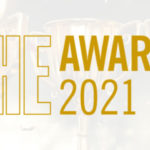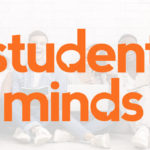Libraries are now a primary source of learning resources for students at all levels of higher education. David Kernohan finds that the implications extend far beyond the library walls.
During the last year, libraries have become the primary source of learning content for undergraduate students.
Libraries, in turn, have needed to adapt what they offer and how they offer it – a move that has repercussions for many parts of the university. Beyond a simple shift from hardback to ebook – though there is plenty of evidence for that – we’ve seen the importance of the library for students soar, and the way in which academics recommend and use readings transformed.
A new world
No matter when you went to university before 2020 you probably bought at least some books for yourself. These may have been second-hand from last year’s cohort, or fresh and new from the bookshop, or arriving in a parcel from an online retailer. You’d have been aware of ebooks as a category, but using an “e-textbook” would have been a rarity and – frankly – a pain.
As an academic, you would have developed a reading list comprising all the books, articles, and websites you usually recommended plus anything good you’d looked at in the last year. If you are of a certain age, you’ll recall publishers reps offering you free samples – otherwise, you’d have seen promotions on mailing lists and at conferences. Or maybe you’d written a book, or knew someone who did.
As a librarian, you would have collected in all these reading lists, grumbled at the length and obscurity, and then endeavored to ensure the library had several copies of key books and at least access to most of the rest. If the budget would stretch to it. You learned how to deal with the occasional grumble that an out-of-print essay collection wasn’t available, especially when not one student had asked for it since 1977.
Learning resources after Covid.
Covid-19 changed all that. The shift to emergency online learning meant that the “browse” model of library discovery was dead. Students expected links to key readings in the library from the virtual learning environment – libraries needed to resource this, often ceasing print purchasing entirely and having long-delayed conversations with academics about just what could be made available. The idea of the reading list as a 30 page long annotated bibliography appeared to be fading away.
Tracey Stanley, Director of Library Services at Cardiff University, told me:
We’ve bought very little in print over the last 12 months. The library has worked with academics to think about a different approach to learning resources. Based on the identification of ‘critical’ readings we’ve worked with publishers and aggregators to identify electronic versions of what students need.
Some libraries had already begun the shift to “digital first” – for others the spate of free access and introductory offers from publishers in April prompted the shift. But as the scale of the job became apparent the aggregators and platforms looked like a better bet – libraries would sign up to multiple offers to ensure coverage. Certain subjects – medicine, sciences, business – could offer a choice of resources. Others – arts in particular – had very few resources, some vocational courses required a specific volume at an eye-watering price. But of the books not offered by libraries as ebooks, about 70 per cent of the time it was because an ebook was simply not available. A small volume of remote physical lending started in September.
Andrew Preater at the University of West London told me:
It’s very much a mixed landscape. Last year intensified challenges that already existed. Choosing the right combination of resources for students is complex in an environment with many vendors and platforms. In particular, we’ve seen a huge growth in demand for core e-textbooks from undergraduates, but we expect this to be more nuanced in future.
What’s the use?
There were problems with some publishers inflating prices, or offering additional content for additional subscriptions. Playing into wider complaints over journal subscriptions (themselves now back to normal after a brief “free” window in the first lockdown) led some to discuss boycotts.
Meanwhile, analytics were casting a light on how and when students were using resources. libraries saw the potential for deep data dives – balanced against student rights to privacy – but even data on whether resources were accessed by most students and how they were being used. In addition, this information could be fed back to course and module leaders with a view to better supporting their students. More detailed usage data will help libraries move through a world where budgets (as in all parts of the university) are less certain.
But the analytics also showed something encouraging. Students were accessing and using library services in far greater numbers than before. Core reading, in particular, was being accessed by most students – where this wasn’t happening course leaders could know quickly and intervene. Some modules saw peaks of access before assessment – this information could be used to redesign structures and offer students a more considered learning pathway.
Resourcing resources
The shift to platforms – and to a lesser extent publisher direct deals – saw libraries incur large new recurrent costs. The growth of 2020 subscriptions is not sustainable, so librarians find themselves critically assessing the value of every deal. Offers that don’t meet clearly identified needs are unlikely to see continued business – and other aspects like the range of content available and the ease of use for students and staff became critical concerns.
Libby Homer at Anglia Ruskin University told me.
We had a large ebook collection anyway.
We prefer multi-user licenses for collection development, and around four-fifths of our spend is on e-resources including textbooks and journals. We offer free core ebooks at level four via the Kortext platform, but this does not cover the full range of levels yet.
In some cases, 2020 saw a long-expected move towards the North American model of a single required core text – academics like the availability of additional teaching and assessment resources, students seem to like the simplicity of an approach that may extend across multiple modules. However, ebooks with this level of enhanced functionality tended to be the most expensive of the lot.
New models
Other providers doubled down on offering inclusive deals to students – core texts for all year one modules. Immensely popular with students who were increasingly scrutinising the costs of study, these moves tended to be made outside of the libraries, unlocking additional university funding.
Resource provision may be focused on the library currently, but there is scope to consider these new models of consumption at a wider level. Academic departments, IT teams, and student services may all have an interest in the way students access learning resources – so the current focus on the library may suggest an inflection point rather than a lasting change. Sorting out where and how the library can add value, and where other departments need to take responsibility for resources, is very much the debate to have later this year.
While universities have always funded subscriptions to research journals and the purchase of monographs, this year has seen a further shift towards an expectation that libraries should offer access to more learning materials – such as electronic textbooks – to support students. Universities as a whole need to consider the financial implications of this shift, and accurate information into how and where these resources are accessed is an important part of the conversation. If there is a rebalancing – or indeed an expansion – of funding needed to meet these newly identified needs this is a discussion that needs to be happening beyond the library.
This article was written by WonkHE in partnership with Kortext.






